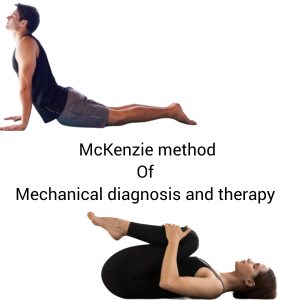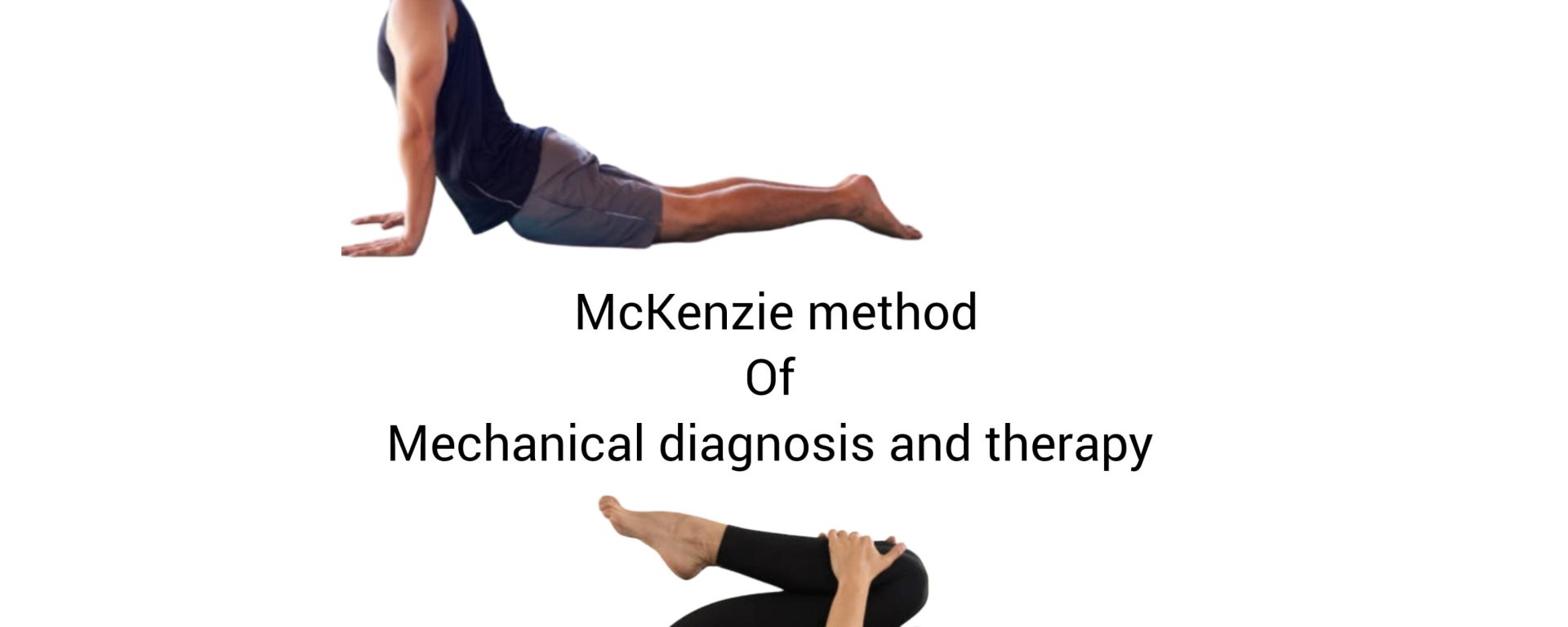
In this blog, which is part of a series dedicated to the McKenzie method, I discussed the scientific basis for mechanical diagnosis and therapy for the lumbar spine. The first section of these series dealt with the McKenzie overview approach, the second with evidence regarding evaluation and prognosis, the third with evidence addressing management, and the fourth with research on direction preference and centralization. In this article, we will go over the McKenzie approach for treating neck pain patients.
Neck discomfort is a common musculoskeletal issue that is frequently treated conservatively in the outpatient context (Blanpied PR, et al. 2017; Baumann A, Fisher L. 2022; Childs JD, et al. 2008). An estimated 70% of people will experience neck pain at some point in their lives, with 54% experiencing it in the previous six months (Blanpied PR, et al. 2017, Takasaki H, May S. 201). Furthermore, the likelihood of recurrence and chronicity of neck discomfort is significant, with up to 5% of adults being incapacitated as a result (Blanpied PR, et al., 2017; Childs JD, et al., 2008). Up to 25% of outpatient physical therapy treatments are anticipated to be allocated to patients with cervical spine disorders, underscoring the considerable economic burden associated with adult neck discomfort (Blanpied PR, et al. 2017).
MECHANICAL DIAGNOSIS AND THERAPY IN THE CERVICAL SPINE:
The guidelines mentioned in the first blog apply equally to patients with cervical and thoracic issues. Prior to repeated movements, baseline measurements of range of motion and neurological state are taken. Again, repeated movements begin in the sagittal plane, particularly extension, with the main differentiator being the role of retraction and protraction. Repeated mobility testing for the cervical spine is most typically performed while sitting upright. In severe or acute cases, repetitive movements may be required while lying. Manual traction while lying may also be utilised in patients who are unable to restore extension. Home exercises are performed in either a sitting or lying position, depending on the results of the physical assessment. In the cervical spine, two movements are evaluated in the frontal plane: lateral flexion and rotation. The latter is connected with upper cervical difficulties, while lateral flexion is associated with lower cervical disorders. In essence, both movements are evaluated for all situations, especially if lateral plane forces are required rather than sagittal plane forces.

Mechanical syndromes are common in patients suffering from neck pain
Two surveys of successive McKenzie educational faculty patients were completed (May 2004a, 2004b). The results of the two investigations were comparable, with the majority of neck pain patients classified as derangement (80%), lower numbers classified as various mechanical syndromes (8%, largely dysfunction), and some identified as non-mechanical syndromes (12%). The majority of patients who did not receive mechanical categorization were classified as mechanically inconclusive (4%), trauma (4%) or chronic pain states (3%). The most prevalent reductive force (66% of those classified as derangement) was extension, but 25% used some aspect of the lateral treatment principle and 6% used flexion as the treatment principle.
This prospective multi-centre study examined the prevalence and consistency of Derangement, Dysfunction, Postural Syndrome, OTHER subsets, Centralization, and Directional Preference (DP) during five visits (Otéro J. & Bonnet F., 2016). 34 Certified MDT therapists working in a range of clinical settings in France identified 293 individuals with nonspecific neck pain of any length. The proportion classified at the first visit is indicated below. As can be observed, the number of patients classified as deranged is encouragingly high, despite the fact that more than 40% of the patients had a history of more than three months. (Note: the irreducible Derangements’ (now termed mechanically unresponsive radiculopathies) observed in the study are included in the OTHER group. Extension was the most popular direction preference for Derangements, accounting for 83.6% of all preferences. 49.2% were Retraction respondents, 31.6% were Retraction-Extension respondents, and 2.7% were Extension respondents. A lateral principle was found to be reductive in 13.7% of the cases, while a DP for flexion was found in only 2.7%. During the initial visit, 52.9% had Centralization and 21.9% had ‘partial’ Centralization. In terms of categorization consistency throughout five visits, only 3.51% of Derangements were reclassified in another subgroup, the majority of which were OTHER subgroups (77.77%). The overall prevalence rates altered just a little throughout the five visits, indicating consistency in the observation of DP. However, the DP switched from one spinal movement to another 41.4% of the time. The authors mention a total of 23 such modifications, with the most prevalent change being a progression rather than a change in direction. direction shift from Retraction to Retraction-Extension (38.8%) Then there was a shift from 10.7% Retraction to Lateral flexion. In 9.9% of cases, no DP became a DP, and in another 5.8% of cases, a DP became a no DP. Concerning the prevalence of centralization, by the fifth visit, the incidence of centralization had increased from 52.9% to 76% between the first and fifth visits.
Literature Review
In comparison to the lumbar spine, the cervical spine has far less relevant literature. However, it has already been shown that cervical spine derangement and centralization are widespread (Hefford C. 2007; Werneke M. et al. 1999).
Efficacy studies
A comprehensive analysis (Clare et al. 2004b) of the efficacy of McKenzie therapy for spinal pain included six randomised controlled trials, one of which included patients with neck pain (Kjellman and Oberg 2002). The McKenzie group experienced fewer pain and disability events in the short and medium term, but the effect sizes were small and not statistically significant. The effects on pain were minus eight and negative two at the different outcome points, respectively, while the effects on the Neck Disability Index were minus five and minus two on 100-point scales, favouring the McKenzie group. The review (Clare et al., 2004b) concluded that there is insufficient data to assess efficacy for cervical pain because there was just one trial with data on cervical spine patients.
Kjellman and Oberg (2002) randomly assigned 77 patients to general exercise, McKenzie therapy, or a control group, with 91% of them being followed up on after a year. In a three-group analysis, pain intensity and frequency, as well as neck-related impairment, improved in all groups with no significant differences. However, in a two-group analysis, McKenzie showed significantly greater improvement in pain intensity and the Neck Disability Index compared to the control group, and after treatment, the McKenzie group improved by 34 points compared to the exercise and control groups, respectively. The Distress and Risk Assessment Method showed significant improvements only in the McKenzie group, and while 70% of the two active groups were normal on this measure, just 42% of the control group were. With five or more points on the Neck Disability Index defined as clinically significant change, 60–63% of patients in the exercise and McKenzie groups achieved this, compared to 37% in the control group. During the intervention period (mean number of sessions: thirteen compared to seven or eight for McKenzie and control groups) and during the follow-up year (102 visits to a health care professional compared to 46 and 140, respectively), the exercise group received significantly more treatment. This trial’s secondary analysis included objective measures of range of motion, muscle endurance, and strength (Kjellman and Oberg 2004). Although the other groups improved, only the McKenzie group improved on all objective metrics.
Rasmussen et al. (2001) described an uncontrolled cohort of sixty patients with neck and arm discomfort, many of whom had signs and symptoms of cervical radiculopathy and were followed up on a year after McKenzie evaluation and therapy. Thirty of the forty-five people who did not get compensation improved significantly, eleven improved little, two remained unchanged, and two were lost to follow-up. Two were significantly better, one was slightly better, nine were unchanged, and three were worse of the fifteen who received compensation. The changes were highly significant, and the authors concluded that the McKenzie approach was helpful for treating cervical radiculopathy in individuals who did not receive compensation with a low degree of intervention following meticulous education.
Early active movement reinforced by mechanical diagnosis and therapy has been proven to be useful in patients with whiplash symptoms (Rosenfeld et al., 2000, 2003).
The most recent systematic review on the efficacy of the McKenzie method of mechanical diagnosis and therapy (MMDT) for the cervical spine was completed nearly a decade ago, included five trials, and was unable to perform a meta-analysis due to study outcome heterogeneity (Takasaki H, May S. 2014). The comprehensive evaluation concluded that the increased advantage of the McKenzie MMDT over control or wait-and-see approaches may not be clinically significant in terms of pain or impairment (Takasaki H., May S. 2014).
Baumann et al. (2023) did a comprehensive review and meta-analysis to investigate the efficacy of the McKenzie technique of mechanical diagnosis and therapy for adult patients with nonspecific neck pain in order to improve evidence-based care and patient outcomes. Numerous high-quality RCTs on the effectiveness of the McKenzie method of mechanical diagnosis and therapy for neck pain have been completed since the last attempt at systematic review in 2014 (Takasaki H, May S. 2014), including nine of the 11 studies included in this review (Abdel-Aziem AA, et al., 2022; Elmeged NA, et al., 2021; Arshad N, et al., 2020; Miecznikowski W, et al. 2019;Law YH. 2015; Lee JH, et al.2017; Yana B, et al. 2021; Baumann A, Fisher L. 2022; Childs JD, et al. 2008). According to the findings of this study, the McKenzie delivers clinically negligible but statistically significant improvements in neck pain for adults with neck pain, regardless of pain degree, when compared to control therapies. However, as compared to control interventions, the McKenzie technique of mechanical diagnosis and therapy produced clinically and statistically significant improvements in neck pain in adult patients with moderate-to-severe neck pain. In adult patients with mild-to-moderate neck pain, the McKenzie technique of mechanical diagnosis and therapy produced no significant change in pain levels when compared to control therapies. Furthermore, as compared to control therapies, the McKenzie MMDT provided no significant improvement in impairment. The McKenzie MMDT did not provide any significant improvement in pain levels when compared to conventional physical therapy alone, but it was trending towards statistical significance. However, these findings were hampered by a small sample size. In conclusion, the McKenzie MMDT approach should be used with caution in individuals with moderate-to-severe neck pain, while more extensive research is needed to assess the impact of McKenzie MDT on neck pain in adult patients.
directional preference established mechanically
Mechanically determined directional preference is a feature of derangement syndrome that aids in determining the exact directional exercise that will result in the optimum management plan (Long et al. 2004). This study only included back pain patients; however, it is an important study in proving the importance of mechanically driven directional preference.
In 86 patients with neck and referral pain, Donelson et al. (1997) studied the pain response to repeated end-range sagittal plane movement tests. Patients were randomly allocated to do the motions in varied orders, which had no effect on their responses. In 45% of cases, sagittal plane motions had consistent and opposing effects. 67% improved with retraction and extension but worsened with protrusion and flexion, while 33% improved with protrusion and flexion but worsened with retraction and extension. Both flexion and protrusion caused peripheralization of pain in ten additional participants (12%), but either reduced pain intensity or happened only with retraction or extension. Thus, 57% of this sample demonstrated mechanically determined directional preference in a single mechanical evaluation limited to four sets of ten repetitions with no use of overpressure, mobilisation, or frontal plane pressures. Lower cervical flexion (flexion and protrusion) increased pain intensity or peripheralization in 43% of individuals, while extension and/or retraction decreased pain intensity or centralization.
In thirteen patients with cervical radiculopathy and ten control participants, Abdulwahab and Sabbahi (2000) studied the effect of twenty minutes of sustained flexion and twenty repeated retraction movements. Flexibility was moderate because participants were merely requested to peruse a magazine in their own casual manner. Radicular pain intensity and H-reflex amplitude as markers of nerve compression were examined as outcomes, with a reduction reflecting compression. The amplitude of the H-reflex was greatly reduced after flexion and significantly enhanced following retraction exercises. In the radiculopathy group, there was a significant rise in symptoms after sustained flexion and a significant decrease after retraction exercises. Even the asymptomatic control group experienced discomfort following the sustained flexion time.
Centralisation
The phenomena is typical of derangement syndrome, and a review showed its high prevalence rate, reliability of assessment, and value as a prognostic predictor (Aina et al. 2004). The review emphasises the paucity of recorded evidence for cervical spine centralisation.
Werneke et al. (1999) documented the symptoms of 289 individuals, 66 (23%) of whom had neck pain. Centralization was precisely defined as a distinct abolition during mechanical evaluation that remained better and improved progressively at each session. Another group, labelled ‘partial reduction,’ showed incremental improvement over time, but this was not always progressive or obviously related to the therapy session. Similar percentages of patients with neck and back pain showed centralization (25% and 31%, respectively) and partial reduction (46% and 44%, respectively). Because there were no significant variations in outcome by pain site, patients with back and neck pain were evaluated together. Centralizers made four fewer visits on average than the partial reduction and non-centralization groups (eight). There was no significant difference in pain or functional outcome between the centralization and partial reduction groups, both of which performed much better than the non-centralization group.
In retrospective cohort research, Edmond SL et al. (2014) found that centralization was 40% and directional preference was 70% in 344 participants. Subjects that were younger and more acute were more likely to exhibit centralization and directional preference, respectively. The directional preference function was better in patients who centralised by 5.4 or 7.7; after age and symptom duration were controlled for, the difference was 3.6 or 5.4, respectively. There were no significant changes in the pain results. Authors’ Conclusion Directional preference and, to a lesser extent, centralization are different categories related to functional outcome improvements. Centralization and directional preference in the cervical spine have already been observed (Werneke et al., 1999; Hefford, 2007). In 111 cervical spine patients, for example, 81% had derangement, 1% had irreducible derangement, 8% had dysfunction, 3% had postural syndrome, and 7% had other conditions. Treatment recommendations for the derangements are as follows: 72%, 9%, and 19% for extension, flexion, and lateral motions, respectively (Hefford 2007).

References
- Abdulwahab SS, Sabbahi M (2000). Neck retractions, cervical root decompression, and radicular pain. JOSPT 30.4-12.
- Aina A, May S, Clare H (2004). The centralization phenomenon of spinal symptoms a systematic review. Manual Therapy 9.134-143.
- Clare HA, Adams R, Maher CG (2004). A systematic review of efficacy of McKenzie therapy for spinal pain. Aus J Physio 50.209-2 1 6.
- Donelson R, Grant W, Kamps C, Richman P (1997). Cervical and referred pain response to repeated end-range testing: a prospective, randomised trial. North American Spine Society, New York.
- Edmond, S. L., Cutrone, G., Werneke, M., Ward, J., Grigsby, D., Weinberg, J., Oswald, W., Oliver, D., McGill, T., & Hart, D. L. (2014). Association between centralization and directional preference and functional and pain outcomes in patients with neck pain. The Journal of orthopaedic and sports physical therapy, 44(2), 68–75.
- Hefford C. McKenzie classification of mechanical spinal pain: profile of syndromes and directions of preference. Man Ther 2007;13:75–81.
- Kjellman G, Oberg B (2002). A randomized clinical trial comparing general exercise.
- McKenzie treatment and a control group in patients with neck pain. J Rehabil Med 34.183-190.
- Long A, Donelson R, Fung T (2004). Does it matter which exercise? A randomized control trial of exercise for low back pain. Spine 29.2593-2602.
- May S (2004a). An audit of mechanical diagnosis classification at multiple sites. McKenzie Institute (UK) Newsletter 12.3.22-31.
- May S (2004b). The McKenzie classification system – an international prevalence survey.
- Otéro J & Bonnet F., (2016) Cervicalgie : prévalence des syndromes McKenzie et des Préférences Directionnelles. 2015.
- Rasmussen C, Rechter L, Schmidt L, Hansen VK, Therkelsen K (2001). The association of the involvement of financial compensation with the outcome of cervicobrachial pain that is treated conservatively. Rheumatology 40.552-554.
- Rosenfeld M, Gunnarsson R, Borenstein P (2000). Early intervention in whiplash associated disorders. A comparison of two treatment protocols. Spine 25.1782- 1787.
- Rosenfeld M, Seferiadis A, Carlsson J, Gunnarsson R (2003). Active intervention in patients with whiplash associated disorders improves long-term prognosis. Spine 22.2491-2498.
- Werneke M, Hart DL, Cook D. A descriptive study of the centralisation phenomenon. A prospective analysis. Spine 1999;24:676–83. 22.23.
- Abdel-Aziem AA, Mohamed RR, Draz AH, Azab AR, Hegazy FA, Diab RH: The effect of McKenzie protocol vs. deep neck flexor and scapulothoracic exercises in subjects with chronic neck pain – a randomized controlled study. Eur Rev Med Pharmacol Sci. 2022, 26:3138-50.
- Ammar T: Stabilization versus McKenzie exercises in patients with mechanical neck dysfunction . Int J Physiother Res. 2018, 6:2588-94.
- Arshad N, Ahmad A, Ali B, Imran M, Hayat S: Comparison between McKenzie extension and neck isometric exercises in the management of nonspecific neck pain: a randomized controlled trial. Khyber Med Univ J. 2020, 12:6-9.
- Baumann A N, Orellana K, Landis L, et al. (May 19, 2023) The McKenzie Method Is an Effective Rehabilitation Paradigm for Treating Adults With
- Moderate-to-Severe Neck Pain: A Systematic Review With Meta-Analysis. Cureus 15(5): e39218.
- Elmeged NA, Ibrahim AH, Labib AM, Ahmed AR, Mohamed GI, Kamal HA: Effect of McKenzie exercises on functional neck disability in females with dowager’s hump. Egypt J of Appl Sci. 2021, 36:163-82.
- Takasaki H, May S: Mechanical diagnosis and therapy has similar effects on pain and disability as ‘wait and see’ and other approaches in people with neck pain: a systematic review. J Physiother. 2014, 60:78-84.
- Kotagiri S, Songa AK, Gad MV, Sulthan N: Effectiveness of Mulligans mobilizations with upper limb movement and McKenzie exercises with neural mobilizations in patients with cervical spondylitis. Int Arch Med. 2018, 5:146-55.
- Miecznikowski W, Kiczmer P, Seńkowska AP, Cygan K, Świętochowska E: Comparison of two methods of cervical spine pain manual therapy using clinical and biochemical pain markers. Med Res J. 2019, 4:163-70.
- Law YH: Investigation on the effectiveness of two different therapeutic exercise programs in patients with chronic mechanical neck pain: a randomized controlled trial. The Hong Kong Polytech University, Hong Kong, China; 2015.
- Lee JH, Lee MY, Lim TH, et al.: Effectiveness of an application-based neck exercise as a pain management tool for office workers with chronic neck pain and functional disability: a pilot randomized trial. Eur J Integr Med. 2017, 12:87-92.
- Yana B, Koch M, Kalita A, Dutta A: To study the effects of deep neck flexor strengthening exercises and McKenzie neck exercises on smart phone users suffering from neck pain: a comparative study. Int J Life Sci Pharma Res. 2021, 11:261-67.
- Blanpied PR, Gross AR, Elliott JM, et al.: Neck pain: revision 2017. J Orthop Sports Phys Ther. 2017, 47:1-83.
- Baumann A, Fisher L: Addition of McKenzie exercises to a multimodal physical therapy approach for cervical radiculopathy: a case report. Cureus. 2022, 14:10.
- Childs JD, Cleland JA, Elliott JM, et al.: Neck pain: clinical practice guidelines linked to the International Classification of Functioning, Disability, and Health from the Orthopedic Section of the American Physical Therapy Association. J Orthop Sports Phys Ther. 2008, 38:1-34.
